Seeing the beautiful green grass gradually turn brown and die is one of the most depressing things a homeowner can experience. Brown patches of dormant, dead, or dying turf are not uncommon; they affect grasses of all types and in all climates. And identifying the root cause of brown patches in the grass is the first step in fixing the problem. Read on and find out why is my lawn turning brown in spots.
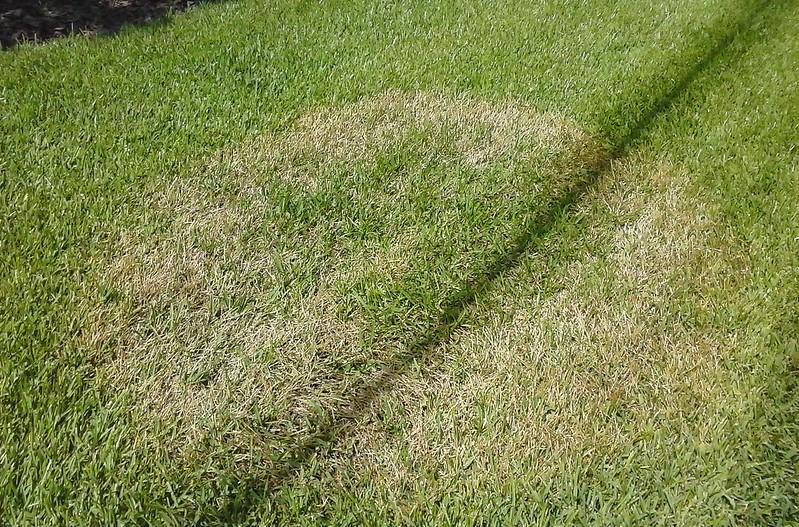
Brown spots are not unique. In fact, they affect all types of warm and cool-season grasses.
Obviously, nobody wants unattractive brown patches to take over their all lush and green expanse of lawn. However, in order to tackle this problem, you must first understand what you are dealing with. Brown spots can have a variety of root causes, including poor soil quality, dog urine, and excessive use of fertilizer and thatch, to name a few.
However, there is no need to worry! We’ve got good news if you have some unsightly dry, brown spots on your lawn! They are easy to fix. How? Continue reading to find out how!
The trick to avoiding patches of brown or dead grass in any yard is to take care of it properly. To begin with, never underwater and overwater your grass. Always use the right amount of fertilizer and ensure uniform application. Moreover, keep the lawn pests, especially grubs, and regularly treat your grass for fungal infections.
That said, grass can sometimes also turn brown when it goes dormant, and there isn’t much you can do about it. Read on to learn more!
What Causes Brown Spots In The Grass?
Thatch
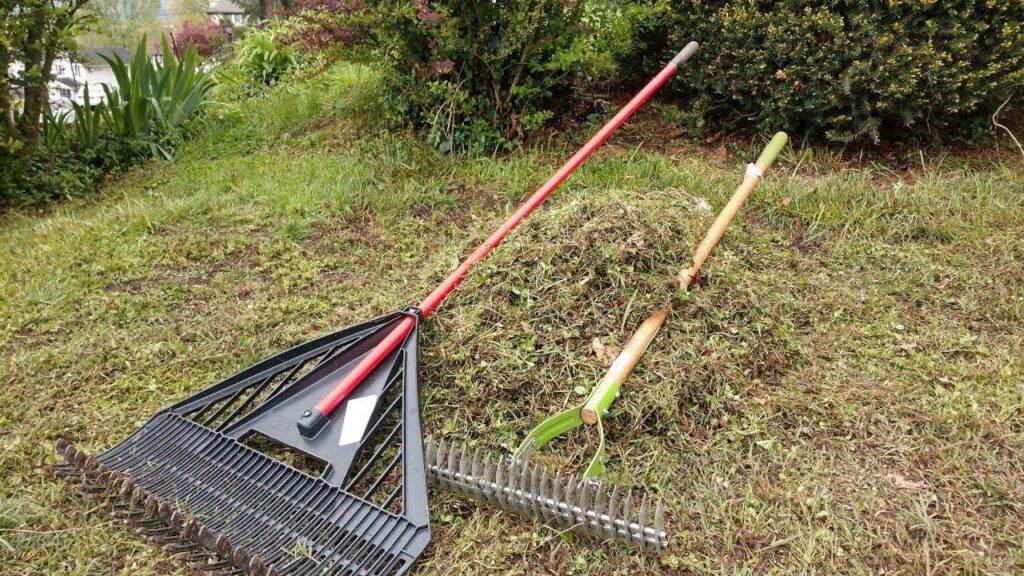
Compacted soil and thatch might hinder a lawn’s capacity to thrive and turn it brown in spots.
Many people believe that grass clippings cause thatch, but in reality, it’s often the result of poor soil or too much fertilizer. When a lawn is not adequately watered, fertilized, or mowed, thatch can begin to accumulate.
To put it simply, it’s an accumulation of dead and decaying plant matter between the leaf blades and the root system of a plant that prevents the free flow of water and nutrients to the roots.
When there is a lot of thatch, the grass plants can even send out roots into it. As a result, nutrient, water, and air availability to grass roots decrease, resulting in brown patches on turf.
How To Fix The Thatch Issue In Your Yard?
You can solve this problem by dethatching your lawn and then aerating it. A dethatching rake, available for purchase or rental at your local gardening center, can be used to remove the thatch layer from your lawn.
However, before buying or renting a dethatcher rake, make sure that its settings are optimized for the variety of grass you have.
Dethatching is required when there is an excessive buildup of thatch on the surface. However, a word of caution: the moment to dethatch your lawn may not necessarily be when you observe the grass turning brown.
Dethatching your lawn works best and puts the least amount of stress on it when it is done in the grass’s active growing season.
Related: How To Grow Grass When You Have Dogs? A Comprehensive Guide
Foot Traffic, Forgotten Toys & Soil Compaction
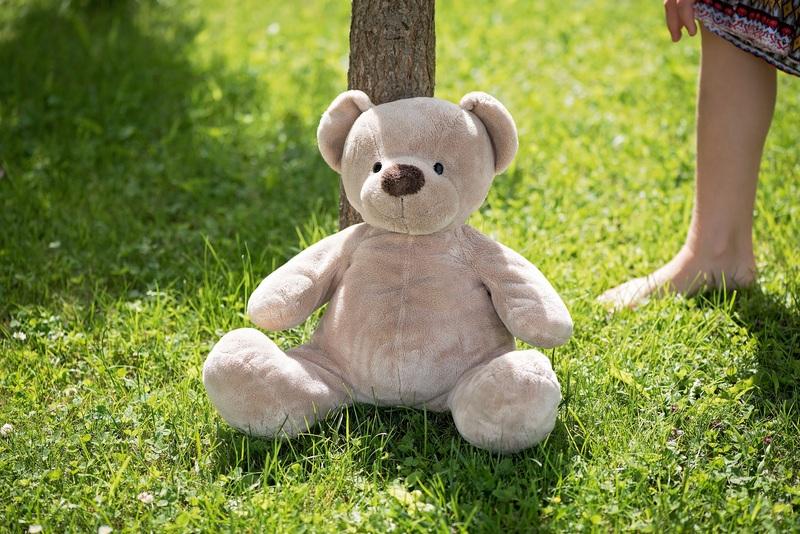
Leaving items on your lawn for even a day or two, let alone extended time, can result in brown patches.
Even though your lawn should be a place where you and your loved ones take pleasure in spending time together, there is risk involved with leaving anything on the grass for an extended period of time, even if it’s just for a single bright day.
You can be left with a dead spot underneath once the baby pool is cleaned up or the bouncy castle from the birthday party is deflated. Even something as simple as leaving the hose out on the grass can result in a brown area. Now, this could happen for many reasons!
For instance, the grass is not getting enough light, water, and air under these objects.
However, usually, it occurs due to soil compaction, especially if the object on top of the grass is heavy. Soil condition plays a significant role in determining the overall health of your grass.
A lawn that has poor soil quality, such as soil that is compacted or lacking in nutrients, will have a weakened root system and will be more susceptible to attack from pests and diseases. When soil becomes compacted, it loses its ability to breathe.
This means that the grass roots will not be able to draw water or nutrients from the soil around them. So, the grass dies slowly over time, leaving you with brown spots.
How To Fix The Soil Compaction Issue In Your Yard?
Brown spots from objects will heal on their own, but patches that have been covered for an extended time may benefit from using a patch and repair products.
However, as was already mentioned, temporary objects aren’t always to blame for brown pots on a lawn; sometimes, it’s soil compaction brought on by heavy foot activity and poor soil.
To eliminate the brown spots in such circumstances, you must first address the issue of soil compaction. This could be easily done with soil aeration.
Aeration involves punching small holes through the soil to create channels through which air, water, and nutrients may reach the grass roots.
Doing so encourages the roots to spread out and become more robust. Aeration is often followed by overseeding, which gets the grass going again.
Weeds
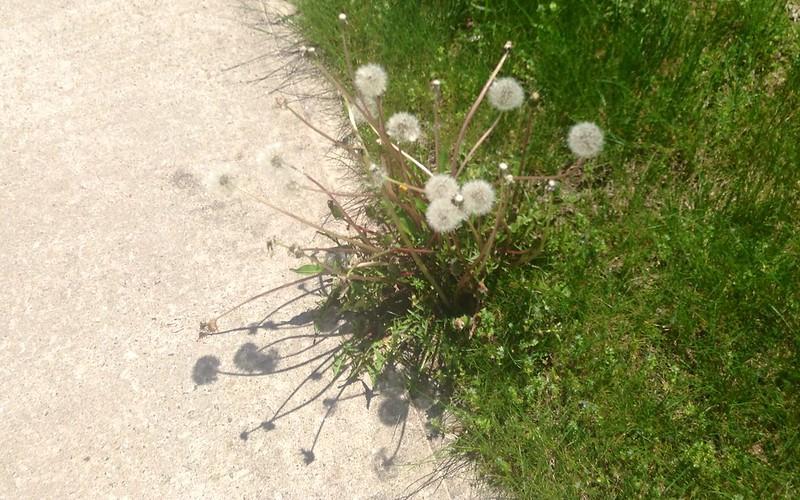
A lawn that is starved of fertilizer and water because of weeds and tree roots will eventually dry up and die.
It is also possible for the lawn to develop dead areas when annual weeds such as crabgrass, annual bluegrass, and foxtail begin to wither and die.
Fall lawns often have brown patches caused by dying weeds, indicating the parts of the yard that were dominated by annual weeds rather than turfgrass.
Weeds are a source of frustration for many people who own their own homes, and the vast majority of people are able to identify weed problems on their own.
Common weeds, such as broadleaf, grassy, and grass-like weeds, crowd out your grass and steal the water and nutrients it needs to grow. This natural cycle can be broken by giving adequate attention and care to the lawn at the appropriate times.
Your grass may perish if there are an excessive number of weeds on your lawn since, eventually, the weeds will outcompete your grass and kill it.
How To Fix The Weed Problem In Your Yard?
It is difficult to keep weeds under control. Most homeowners will resort to herbicides to combat weeds in their lawns, but doing so requires careful timing and product selection.
For instance, you may apply a pre-emergent herbicide in the spring to stop weed seeds from sprouting and growing into weeds.
However, if you already have a problem with weeds in your yard, you will need to apply a pesticide that is labeled as post-emergent.
Even so, in order to rid your lawn of weeds, you will need to select the appropriate product to use. For example, conventional herbicides used on lawns are typically ineffective against grassy weeds such as crabgrass.
Grubs & Insect Pests
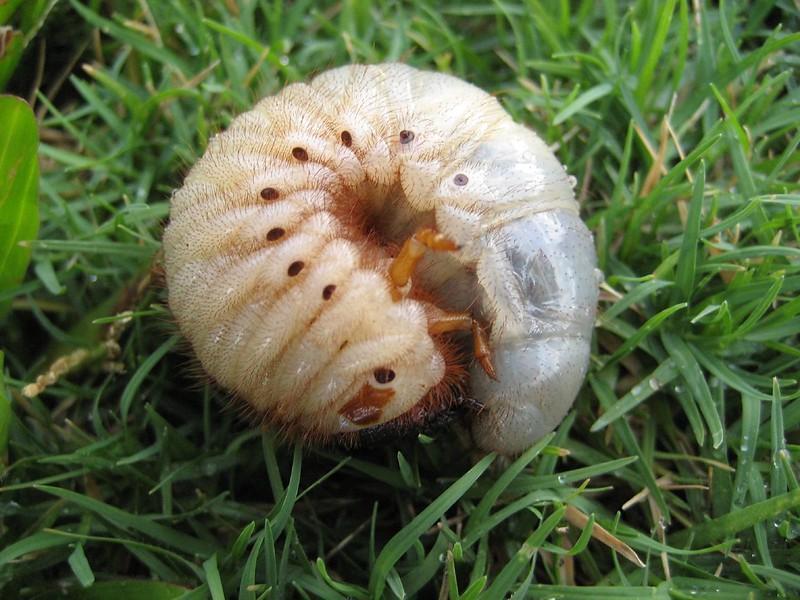
Grubs can be readily treated with milky spore powder, which can be found easily at your local garden store.
Grubs are the fat, white beetle larvae that feed on roots and can cause significant harm to the soil as a result. Because of the way they eat, your lawn can end up with brown areas that look like sponges. It is likely that there are grubs in the soil eating away at the grass roots if loose clusters of grass are coming up by the bunch.
Without a robust root system, the grass will become messy, turn brown, and eventually perish. Grub-caused damage has the appearance of brown spots that gradually and uniformly become larger and larger.
Because of the damage to the roots, patches that have been damaged by grubs will have a sponge-like texture and roll up when raked. Other insects devour grass blades, causing lawn patches to appear as if they were trimmed too closely.
Chinch bugs are one of the common pests that can endanger the health of your lawn. They create holes in the grass blades, killing the grass from the top down. Both chinch bug and grub infestations can leave your yard with brown patches here and there.
How To Fix The Grub Or Pest Problem In Your Yard?
There are many natural treatments that may be used at home to treat grubs, such as the introduction of beneficial nematodes or milky spore disease in the lawn soil.
You can also reduce the bug population on your lawn by letting it dry out; this tactic is particularly effective for dealing with grubs.
A commercial insecticide is another alternative, but you must be careful not to eliminate the lawn’s beneficial insects in the process. Fortunately, lawn care businesses like TruGreen also offer grub control, so you won’t have to take any chances when it comes to finding a solution.
You might also plant low-maintenance turf grasses that are more resistant to grubs than Kentucky bluegrasses or perennial ryes. These grasses require less attention from you.
Related: Lawn Fertilizer Schedule | When To Fertilize Your Grass For The Best Results?
Fungus & Lawn Diseases
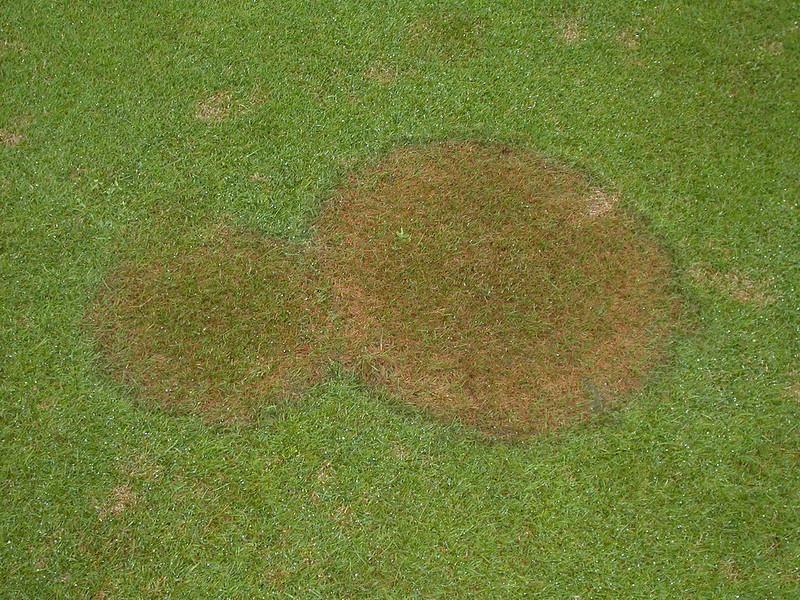
Brown patch is a fungal disease that damages lawns throughout the warm season (late spring through early fall).
In most cases, brown spots caused by fungal issues appear in the form of irregular patches. If the illness has been present for some time, the grass on the interior of the area may be able to heal, but the grass around it will die and form a ring.
Lack of sunlight and poor air circulation are some factors that might contribute to the spread of fungal infections, along with weather conditions that are excessively wet or humid. For example, brown patch disease causes your lawn to develop yellowish-brown irregular circular spots that are encircled by a smoke ring border.
In most cases, the grass just begins to thin out as it approaches the smoke ring border. On the other hand, there are times when all of the grass on the inside of the ring dies. A variety of illnesses and fungi can cause your lawn to become brown.
However, suppose your grass is coated with white, black, or brown particles. In that case, a severe lawn disease is definitely the cause of your problem and should be identified and treated by a lawn care professional.
How To Fix The Fungal Disease Issue In Your Yard?
You should start by treating the grass with a fungicide as your first line of defense against these circles of brown spots on your lawn.
You should also only treat the problem region, not the entire lawn. If it doesn’t work, you can try digging up the ring and planting new grass in its place.
Furthermore, proper lawn care, which includes watering the lawn adequately first thing in the morning, mowing the lawn consistently, aerating the lawn effectively, and controlling thatch, will result in a healthier lawn that is more likely to be resistant to lawn disease.
Another thing that can contribute to a problem with fungi is soil with insufficient amounts of nitrogen and no fertilizer. In the same way, watering in the evening, when the grass might not be able to dry out completely, is another reason.
Therefore, if you want to avoid lawn illnesses from returning after they have been treated, it is imperative that you adhere to a thorough lawn care plan.
Pet Waste & Urine
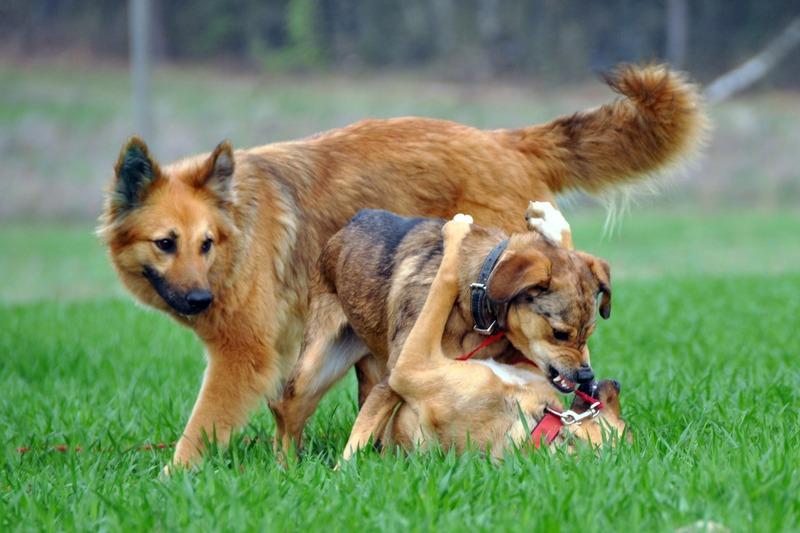
That’s right! The high nitrogen content of dog or other animal urine leads to the browning of grass.
You have a soft spot in your heart for furry companions, but did you know that dog and cat pee include salts that can destroy grass and leave behind round, brown dead patches that aren’t likely to go green again on their own?
Due to the high nitrogen content, the urine left behind by animals such as dogs can cause brown stains to appear on your grass. These brown patches have brown cores encircled by dark rings.
How To Fix The Pet Urine/Waste Issue In Your Yard?
The most effective solution for this problem is to rake up as much of the patchy sections as possible, cover them with dirt, and then scatter some grass seeds over the area.
To encourage new growth, water the area once each day for the next two weeks. In the future, you may also decide to replace some of the grass on your property with mulch and designate that area as a “potty” location for your pets.
Alternatively, you may simply take them for walks.
Related: How Cold Is Too Cold For Grass Seeds? A Comprehensive Guide
Too Much Fertilizer & Water
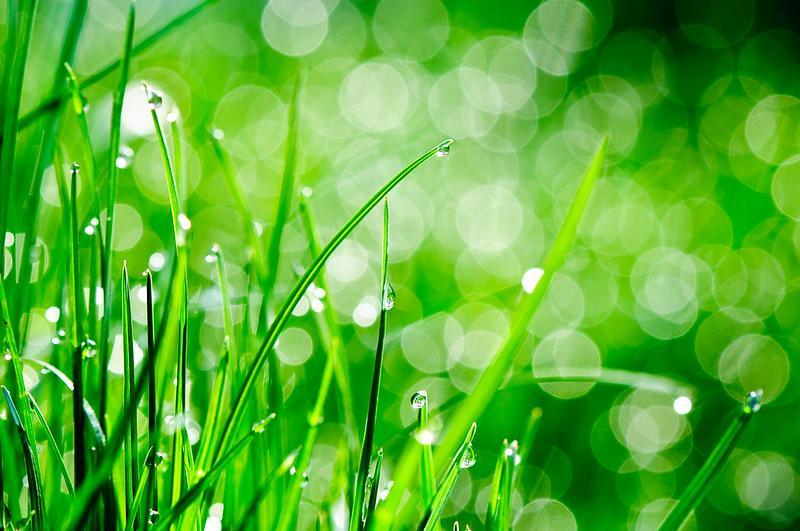
Overwatering and over-fertilizing both can result in the formation of brown spots on a lawn.
Many homeowners unintentionally cause brown spots on their lawns by providing too much fertilizer. For instance, fertilizers are an excellent way to ensure that your lawn receives all the necessary nutrients.
However, the plant will begin to turn brown if there is excessive fertilizer. In a similar vein, having an abundance of water can also be a challenge.
When sprinklers are left on for too long after daily watering, this can cause the soil to become too saturated. If you continue to overwater in this manner, the grass will die from suffocation, and its roots will not develop properly.
All in all, both of these things have the potential to induce a chemical burn or a change in pH in your soil, either of which will result in the death of the grass in the affected area.
How To Fix The Overfertilization & Overwatering Issue In Your Yard?
Depending on the weather, lawns should ideally receive 1 to 1 1/2 inches of water every week. Additionally, avoid overfeeding your grass by fertilizing more frequently than is advised, and avoid fertilizing on hot days.
You should particularly pay attention to how frequently you fertilize, what kind of fertilizer you’re using, and how often you water in order to spot these problems.
Additionally, use slow-release fertilizers to enhance absorption and lower the chance of fertilizer burn. In a similar manner, consider giving your plants sparing yet deep waterings. This will lessen the possibility of overwatering and promote the growth of deep roots.
Drought Stress & Dormancy
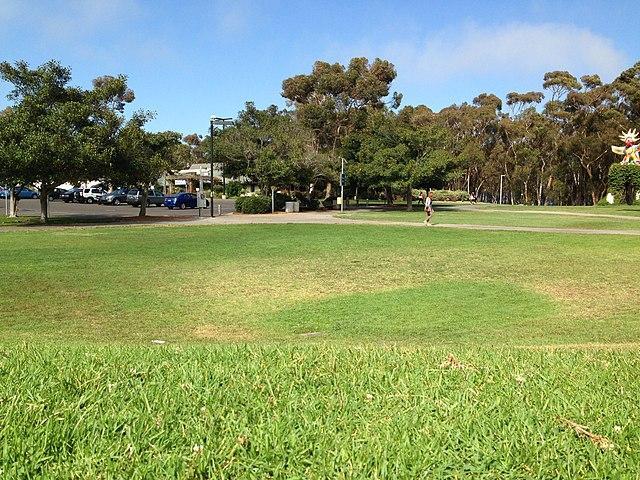
The grass may enter dormancy during extreme heat or drought dress, thus turning brown.
Many types of turf grasses enter a state of dormancy when the temperature is high, and there is a shortage of water. There’s nothing to worry about; your grass will bounce back as the weather cools down and the rain starts falling again.
Warm-season grasses and some cool-season grasses go dormant in the winter. Some areas of your lawn may begin to turn brown before others if it is located in a transition zone and is composed of many different kinds of grass.
You will probably notice that your grass is beginning to wilt before it becomes brown if the problem is caused by heat stress or drought. Also, browning will often occur across the entire lawn rather than in isolated places.
How To Make Your Lawn Immune To Drought & Heat?
Increase the mowing height to 3 inches or more in the summer. The higher grass will provide shade for the roots and lessen water evaporation. Similarly, you must water your lawn sparingly yet deeply.
It will maintain your grass’ drought resistance and promote the development of deep roots. You may also need to adjust a sprinkler head to ensure that the sprinkler is reaching all areas of the lawn.
Abnormal Soil pH
Iron chlorosis can take hold in your lawn if the soil pH is too “alkaline” or too acidic, and it can cause patches of yellowing or, in more severe cases, browning of the grass.
To find out for sure, you need to have your soil analyzed. If the pH is lower than 6, the soil will need to have some amendments added to it.
You can raise the pH of your soil by adding organic matter or compost. Similarly, if the pH is higher than 7.2, you can improve your grass’s color and lower the soil’s pH by applying sulfur to your lawn.
The ideal pH range for most grasses is between 6 and 7. However, you should still do some study and make sure that the pH of the soil in your lawn is adjusted appropriately according to the type of grass you have.
Final Thoughts
So, what could be causing the brown patches on your lawn? You can see that it might be due to several different factors! The good news is that brown spots in your yard can be treated, regardless of what caused them, and your grass can be returned to a healthy condition.
Frequently Asked Questions (FAQS)
Why are brown spots appearing on my lawn?
Brown patches on your lawn can be caused by various causes, including too much moisture, inadequate soil drainage, extreme heat and humidity, too much nitrogen, too much thatch, and compacted soil.
There is, however, no cause for concern. Brown spots on lawns are frequently simple to treat and can be fixed by do-it-yourself approaches.
How do I get brown spots out of my lawn?
Examine the sprinklers if the brown patches emerge in only one section of your grass. To ensure complete coverage, you may need to adjust the sprinkler heads.
But occasionally, something else, like pet urine or lawn grubs, could be the issue. Therefore, to address the brown spot problem on your lawn, you must first identify its underlying cause.
Can grass recover from brown patch disease?
Your turf can recover from the brown patch, so there’s good news there. The bad news? It’s possible that you won’t notice an improvement in look until the active growth season.
Brown Patch can grow over a period of several months. So, fungicides will be required if you want to get rid of the brown patch fast.
Can brown grass turn green again?
Although the grass plants may appear to be brown and dead to the naked eye, a little portion of the plant is still alive. Naturally, the rain will make a brown lawn green again. However, watering your grass well once a week will help it recover its green color if rainfall is insufficient.
Will lawn fungus go away on its own?
Sadly, grass fungus frequently does not go away by itself. Though it may start to resolve itself on occasion, it is more often than not a problem that will spread and worsen if left untreated. The good news is that you can treat many grass fungus cases and prevent future issues by following appropriate lawn care techniques.
Sources For Further Reading
Brown Patch. (2015). The University of Massachusetts Amherst. Retrieved 13 September 2022, from https://ag.umass.edu/turf/fact-sheets/brown-patch#:~:text=Brown%20patch%20is%20caused%20by,few%20inches%20to%20several%20feet.
Brown spots on the lawn. (2018). The University of Illinois. Retrieved 13 September 2022, from https://extension.illinois.edu/blogs/flowers-fruits-and-frass/2018-08-29-brown-spots-lawn
Brown Patch – Lawns | University of Maryland Extension. (2022). Retrieved 13 September 2022, from https://extension.umd.edu/resource/brown-patch-lawns
Brown Patch of Turfgrasses | Public | Clemson University, South Carolina. (2022). Retrieved 13 September 2022, from https://www.clemson.edu/public/regulatory/plant-problem/fact-sheets/brown-patch.html
Editor’s Recommendations
How To Start A Lawn Mower With Old Gas? Easy Tips & Tricks From The Experts
Worst Lawn Mower Brands To Avoid (and What To Buy Instead)
What To Do With Grass Clippings | 10 Smart Ways To Recycle Grass Clippings







